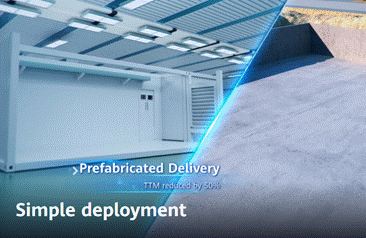Container
data centers are revolutionizing the way businesses manage and store data.
These compact, modular data centers are crucial for enhancing the flexibility
and scalability of IT infrastructure. Edge computing is another innovative
approach, bringing data processing closer to the source of data generation.
This synergy of container data centers and edge computing is re-shaping IT
landscapes, offering unparalleled efficiency and speed.

What are Container Data Centers?
Key
Characteristics of Container Data Centers
Container
data centers are modular solutions housed in standard shipping containers.
Their key characteristics include portability, scalability, and rapid
deployment. They are designed to operate in diverse environments, accommodating
various IT needs. The modular nature means that businesses can scale their containerized data center capacity up or down quickly, responding to changes in demand
without substantial overhead.
How Container Data Centers Work
These
data centers integrate all necessary infrastructure components – power,
cooling, networking, and physical security – within a single container. They
can be quickly transported and deployed to serve onsite data processing needs.
By offering modular units, they provide a plug-and-play solution for expanding
IT capabilities efficiently.
The Role of Edge Computing in Modern IT Infrastructure
What
is Edge Computing?
Edge
computing brings data processing and storage closer to the data source, rather
than relying on centralized data centers. This approach reduces latency and
bandwidth use, leading to faster data processing and real-time analytics. It is
critical for applications requiring immediate insights and actions.
How Edge Computing Enhances Data Processing
By
processing data closer to where it is generated, edge computing minimizes the
distance data must travel, thereby reducing latency. This results in quicker
response times and a significant decrease in bandwidth usage, enhancing overall
network performance and reliability, especially in high-demand scenarios.
Why Container Data Centers are Ideal for Edge
Computing
Scalability
and Flexibility
Container
data centers offer unmatched scalability and flexibility, making them ideal for
edge computing. Businesses can add or remove containers as needed, adapting to
fluctuating demands without the extensive planning and costs associated with
traditional data center expansions. This modularity makes it easier to manage
IT resources efficiently.
Quick Deployment and Mobility
These
data centers can be quickly transported and deployed, offering a high level of
mobility. This is crucial for edge computing, where speed of deployment can
significantly impact performance and efficiency. Container data centers allow
businesses to establish IT capabilities in new locations rapidly, addressing
emerging needs without delay.
Benefits of Using Container Data Centers for Edge
Computing
Cost-Effectiveness
and Energy Efficiency
Container
data centers can be more cost-effective than traditional data centers due to
their modular nature and quick deployment capabilities. They often require less
capital investment and lower operational costs. Additionally, their compact
design can lead to better energy efficiency, reducing the carbon footprint and
supporting sustainable IT practices.
Increased Performance and Reduced Latency
By
integrating edge computing with container data centers, businesses can
significantly enhance performance and reduce latency. Processing data locally
means faster response times and improved user experiences. This is particularly
beneficial for applications requiring real-time data processing, such as IoT,
AI, and machine learning.
Challenges and Solutions in Deploying Container Data
Centers at the Edge
Addressing
Connectivity and Maintenance
One
significant challenge is ensuring reliable connectivity in diverse locations.
Solutions include investing in robust networking infrastructure and using
advanced monitoring tools to maintain uptime. Regular maintenance and remote
management capabilities are crucial for addressing potential connectivity
issues swiftly.

Ensuring Security and Compliance
Security
and compliance are paramount when deploying container data centers at the edge.
Implementing strong encryption, multi-factor authentication, and regular audits
can safeguard data integrity. Ensuring compliance with industry standards and
regulations is essential to protect sensitive information and maintain trust.
Conclusion
Container
data centers are instrumental in advancing edge computing, offering unmatched
flexibility, scalability, and efficiency. Their transformative impact on IT
infrastructure is clear, driving innovation and enabling new capabilities. As
technology continues to evolve, the role of container data centers in edge
computing will become even more pivotal, shaping the future of data management
and processing. Embracing this synergy can significantly enhance an
organization’s IT capabilities today and in the future.
